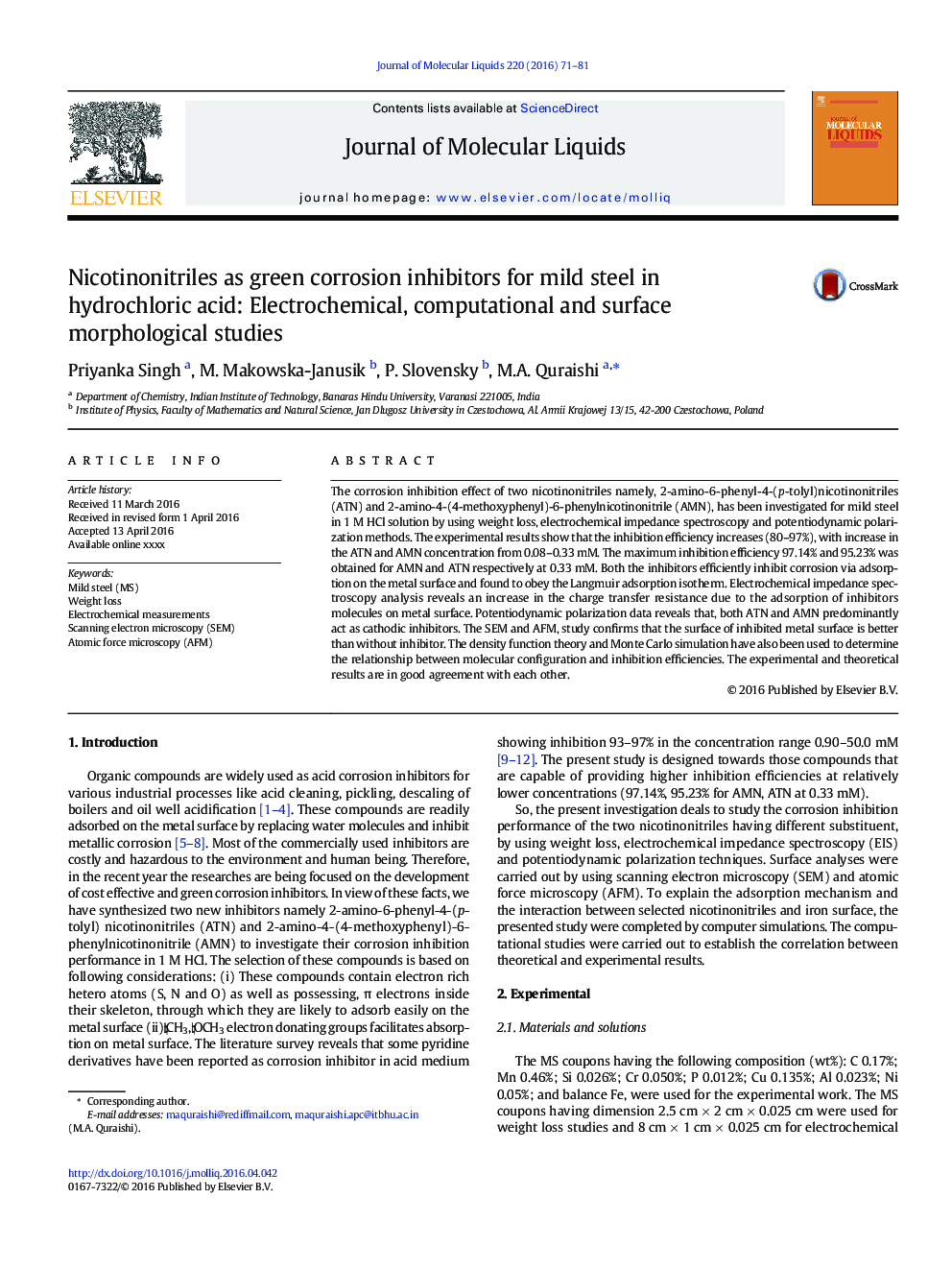| Article ID | Journal | Published Year | Pages | File Type |
|---|---|---|---|---|
| 5409659 | Journal of Molecular Liquids | 2016 | 11 Pages |
Abstract
The corrosion inhibition effect of two nicotinonitriles namely, 2-amino-6-phenyl-4-(p-tolyl)nicotinonitriles (ATN) and 2-amino-4-(4-methoxyphenyl)-6-phenylnicotinonitrile (AMN), has been investigated for mild steel in 1Â M HCl solution by using weight loss, electrochemical impedance spectroscopy and potentiodynamic polarization methods. The experimental results show that the inhibition efficiency increases (80-97%), with increase in the ATN and AMN concentration from 0.08-0.33Â mM. The maximum inhibition efficiency 97.14% and 95.23% was obtained for AMN and ATN respectively at 0.33Â mM. Both the inhibitors efficiently inhibit corrosion via adsorption on the metal surface and found to obey the Langmuir adsorption isotherm. Electrochemical impedance spectroscopy analysis reveals an increase in the charge transfer resistance due to the adsorption of inhibitors molecules on metal surface. Potentiodynamic polarization data reveals that, both ATN and AMN predominantly act as cathodic inhibitors. The SEM and AFM, study confirms that the surface of inhibited metal surface is better than without inhibitor. The density function theory and Monte Carlo simulation have also been used to determine the relationship between molecular configuration and inhibition efficiencies. The experimental and theoretical results are in good agreement with each other.
Keywords
Related Topics
Physical Sciences and Engineering
Chemistry
Physical and Theoretical Chemistry
Authors
Priyanka Singh, M. Makowska-Janusik, P. Slovensky, M.A. Quraishi,
